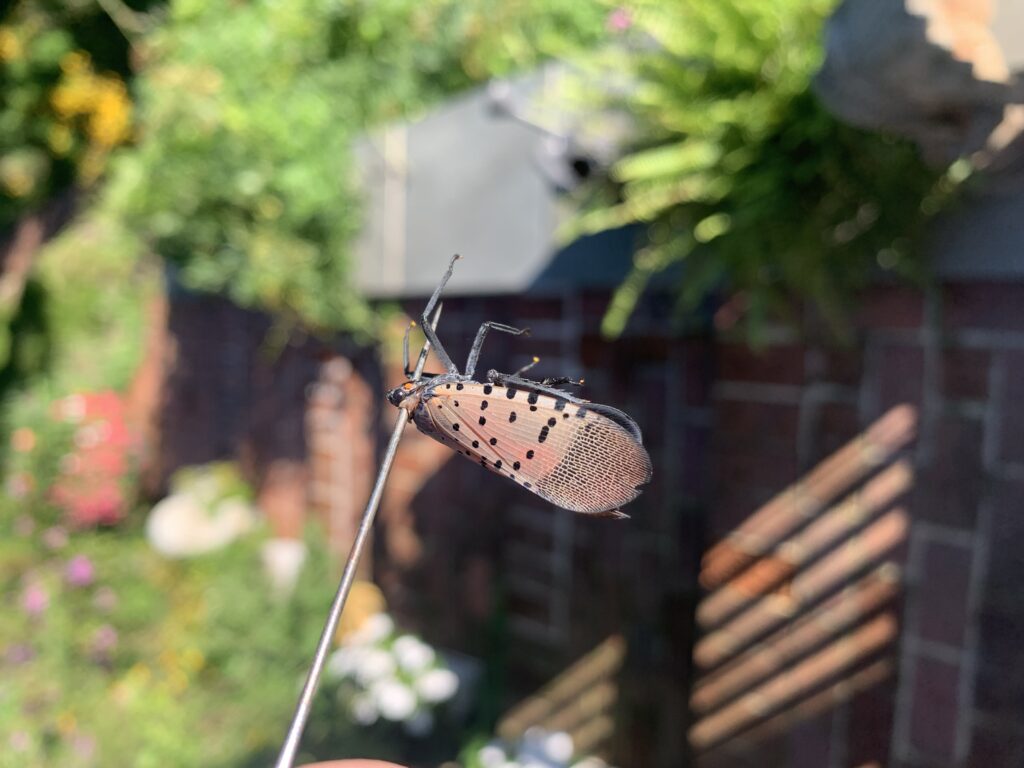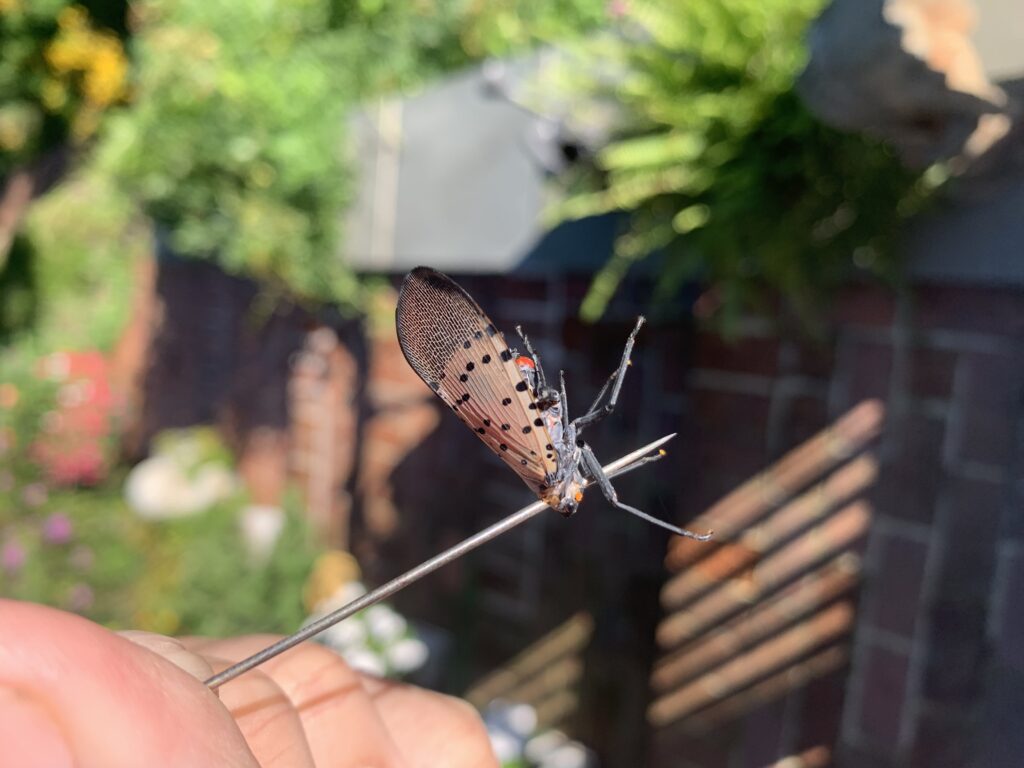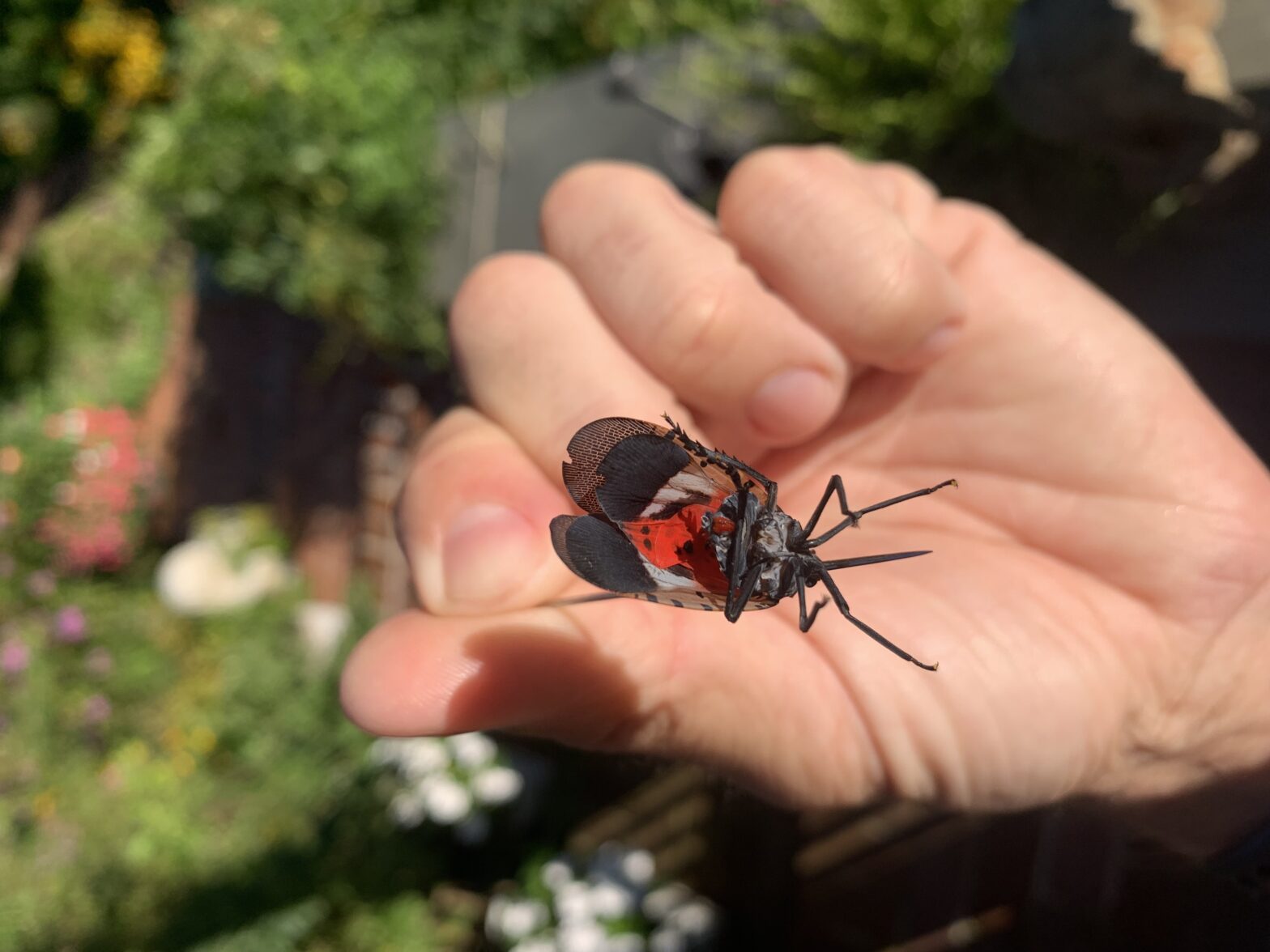

The Eastern Fly Fisherman & The Spotted Lantern Fly – What they do, What can we do?
“All fisherman, whether they realize it or not – and most do – care very much about the aesthetics of their fishing spots; they are part of the mood and meaning of going fishing. Aesthetic qualities are rather easily destroyed.” – Roderick Haig-Brown BRIGHT WATERS, BRIGHT FISH
We now have a new member in our ecological community. From an entomological perspective, the propagation of the Spotted Lantern Fly throughout our Eastern states has been interesting to watch unfold. From its arrival in early autumn 2014 to now it has migrated to 14 states with the western boundary currently being Michigan, at the time of the writing.
The spotted lantern fly (SLF) is taxonomically related to the plant hopper. Some of us fly fisherman may be familiar with them, we usually identify both natural and fly pattern as the Jassid. A pattern credited to Carlisle Pennsylvania angler Vincent Marinaro. His fly is modeled after this small fusiform shaped insect that can hop far and fast relative to its usually minute size. They come in a variety of colors and resemble both a grasshopper and a beetle. They are usually found in meadows and fields that are close to water. Even in deep wooded environments you can find them present in certain riparian habitats and sometimes in plain fields that are rather wet during the warmer seasons.
The SLF is a much larger species than our familiar Jassid. With that increase in size comes a corresponding increase in the size and scope of its habitation and role within its resident biosystem. This increase is of importance by the way it feeds, the effect of the byproducts it leaves behind from this feeding, and how it reproduces. The SLF does not bite or sting although it generates startling power in its launch into flight – so much that it produces an uncomfortable sensation if the launch is from a part your body. Worst of all, they’re beautiful.
It feeds in the same way as our indigenous leaf hoppers although it seems to have a heavy preference for certain fruit trees. The Tree of Heaven, also an invasive species, is their preferred food source. It bores small holes in the trunk, stems, and leaves with its mouthparts to feed on the sap. The SLF produces a sticky substance, sugary in composition, which is what negatively affects the host plants. Called “honeydew,” this waste excreted from feeding damages the trees by promoting the growth of mold and attracting other insects that can do harm. According to the most recent data the SLF does not cause mortally in trees, it is considered a stressor which can cause stunted growth and “localized damage.”
My experience has mostly been in sympathy with the current data. In my geographical area of North Central Maryland/ South Central Pennsylvania we have observed the SLF to be primarily inhabiting the walnut trees. Although, where the tree of heaven is present most will be predisposed toward the latter. The SLF may not be a killer of trees but the probability of mortality due to their presence alone in trees already of marginal health will be sure it increase. I think this is the marker a lot of us are missing. Trees already weak will have a higher chance of dying from this added stress. Moreover if we come to find the SLF taking a liking to oak trees in the future we may indeed have a substantial issue on our hands. Specific species of oak trees in my geographical region are currently in danger from other sources of detrimental impact. Added stress from the SLF will only compound the matter.
Unfortunately it seems the fish have no preferred interest in the SLF as a food item. I have never seen them physically on or in the water, which is a bit ironic as my introductory experience with the nymph stage of their life cycle came while fishing on my home river. I happened to be standing ankle deep, wet wading in a fast shallow riffle during the early summer of 2016. And as I somehow seem to be more observant and tuned to my surroundings when wet wadding, I happened upon a concentrated hatch of insects taking flight from fast water which I identified as caddis flies (rhyacophila). Magically emerging just downstream of this fast riffle section- gin clear water aerated by the speed in which it travels over the brownish to yellow pea gravel- and hop towards eventual flight, I saw a flying insect that I later confirmed as being unidentified. At the time I immediately thought mosquito due to its pronounced shadowy dark colored body with white lateral banding. Black and white with a shadow-like appearance, same as the dreaded Asian Tiger Mosquito.
The nymph stage of the SLF consists of 4 instars (subsequent phases of marked growth) and it was in the first instar that I mistook them on the river to be the Asian Tiger Mosquito. I remember being confounded to the fact that I saw so many mosquitos without receiving a single bite. Observations revealed that their flight and size was unlike the mosquito- four legs dangling as if ready for an emergency landing and (to put it in to angling terms) a size 12 opposed to a size 18 or smaller. With a flight pattern best described as unwieldy, the nymphs seem to struggle to maintain a course as their wings seem to provide too much propulsion contrasting the mosquito which is a more agile and deliberate aviator. SLF’s have 4 legs opposed to the six of the mosquito and after some research of other inconsistencies this led to the conclusion that I was the witness to a new insect not only personally but possibly to our locale. Again, this was summer 2016 and it was roughly 4 years until the SPF came on our radar as a potential threat to our existing ecosystem.
Is there something that we, as fly anglers, can do? What can we do to help or can we really help at all? The SLF is a unique problem that currently seems to be more the topic in conversation among the portion of our community that has entomological inclinations. This specific case seems to, at this present time, not quite be at the threshold of severity but it can easily approach and cross it with time. Matters like this should be a topic of conversation for all fly anglers, in my humble opinion, as conservation is and will hold more weight within our attention as average water temps increase and invasive species grow in numbers.
In aggregate it all converges to alter the environment that produce and sustain cold clean water. Conservation at the grass roots level is the observance of and conversations about such changes within ones frequented waters and beyond. It starts at home. These conversations can lead to action. The waters one loves most are the waters that one seems to be most observant and vigilant about. So it is simply the act of being aware; that is what we need to do as fly anglers… just be aware, and communicative. Be observant and take note of new experiences you see and feel; it will benefit all aspects of our streamcraft.
DA
